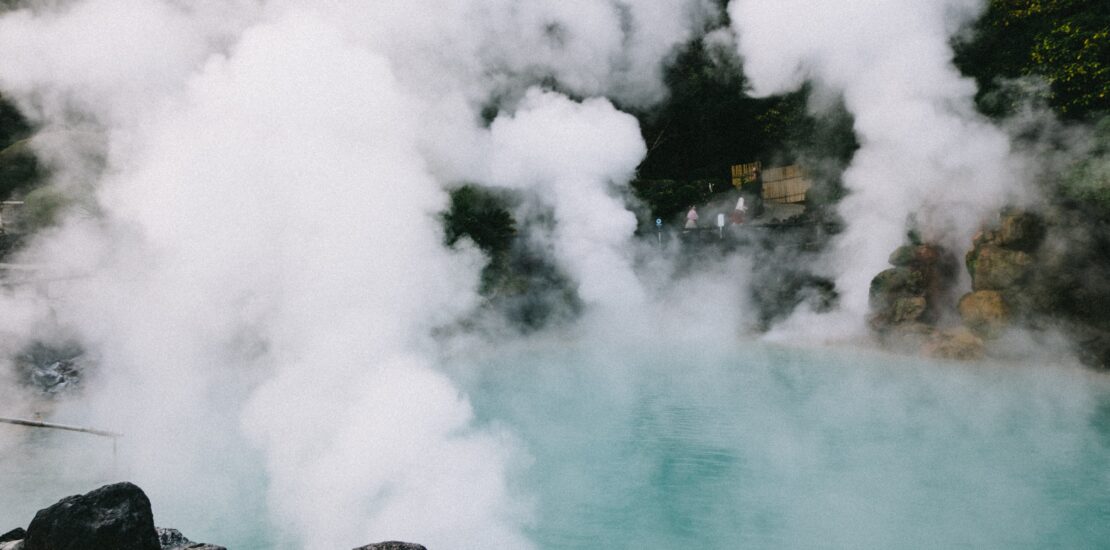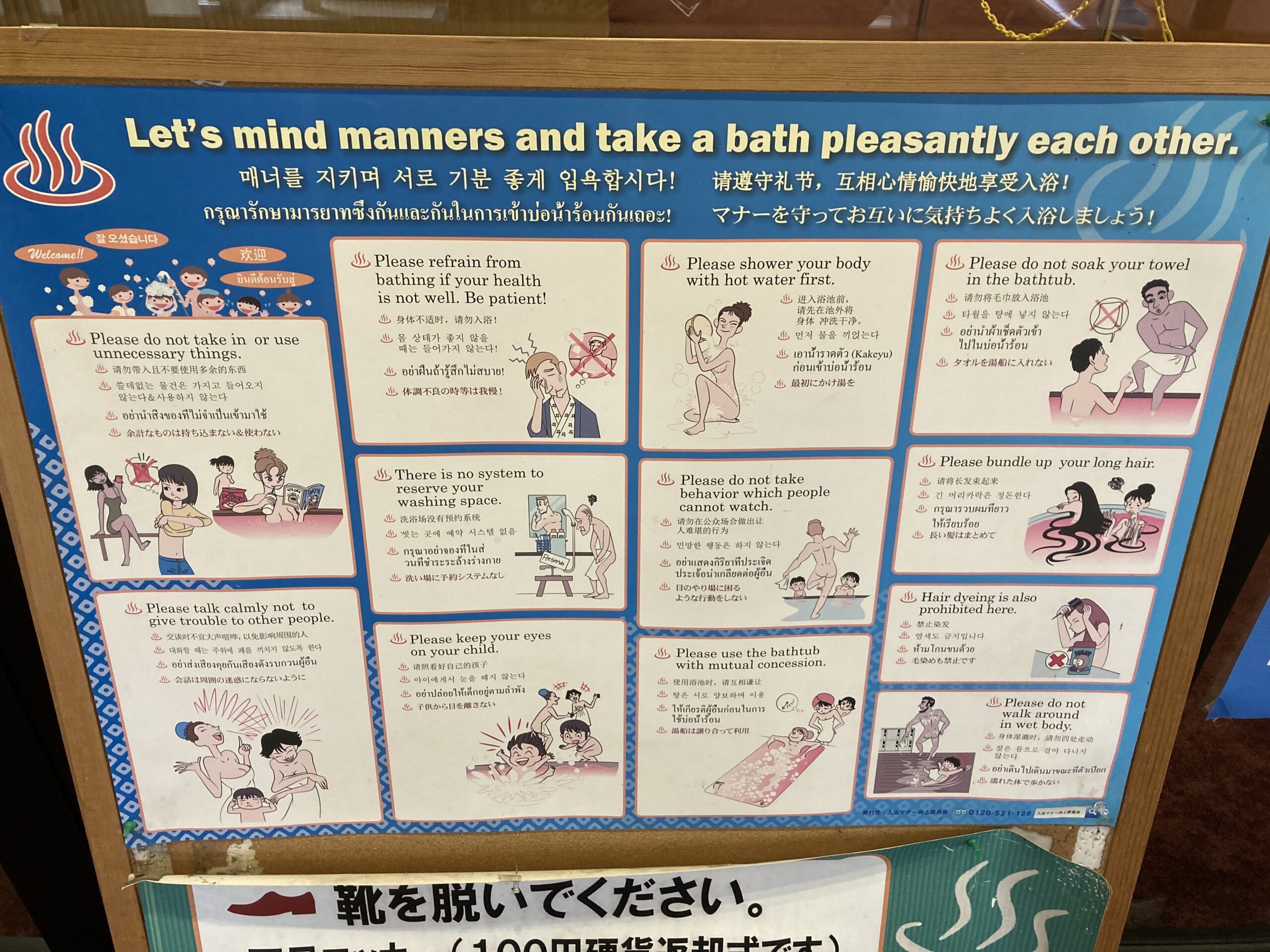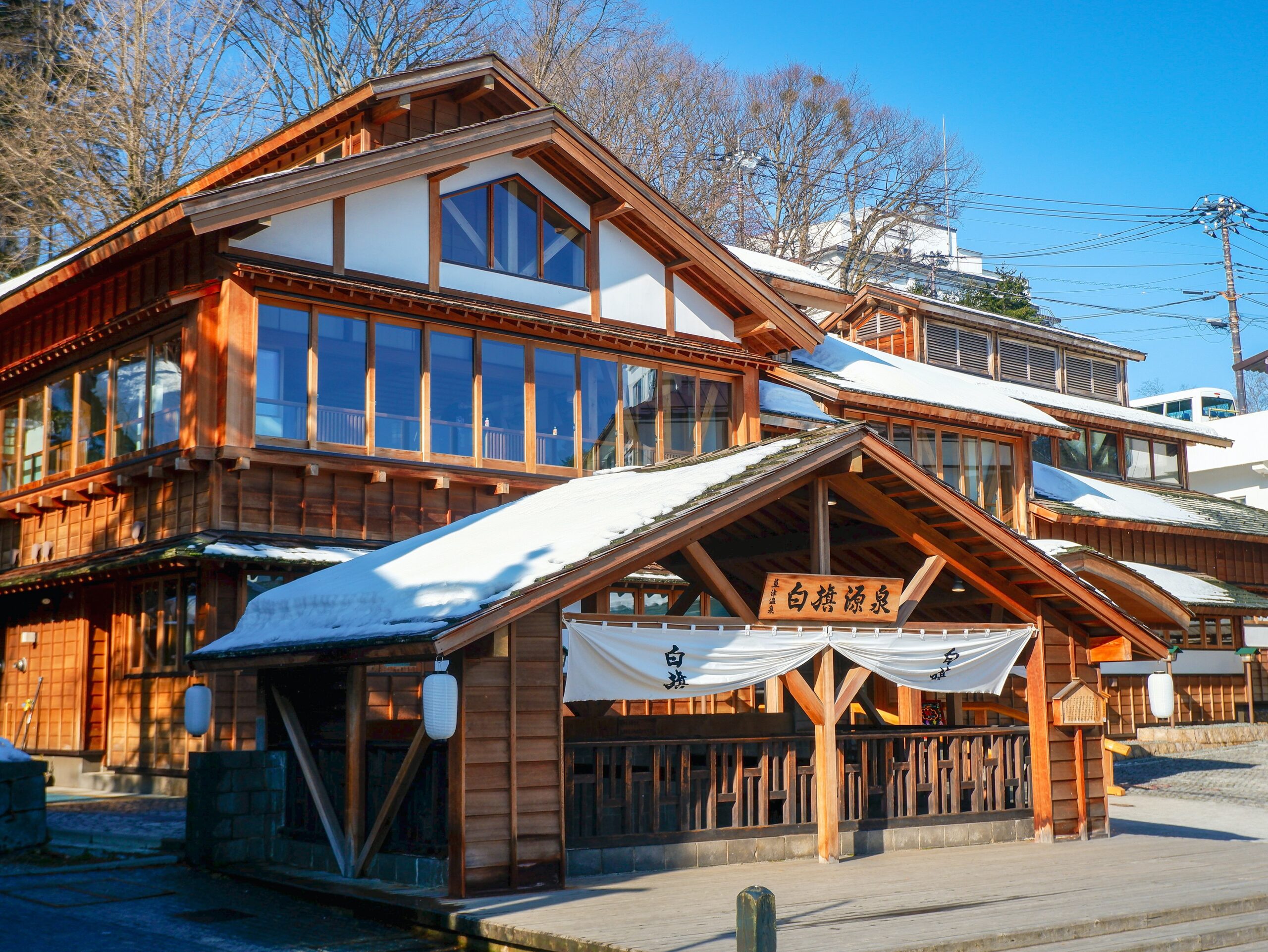Public baths are an important part of Japanese life and culture. As with most aspects of Japanese culture, there are unspoken rules that you must abide by when visiting an onsen. Read this article to find out Japanese onsen etiquette.

Public baths are an important part of Japanese life and culture. In most vacation spots and tourist areas, there is bound to be an 温泉onsen (hot spring) you should visit! Some popular onsen towns easily accessible from Tokyo include: Kusatsu in Gunma, Hakone in Kanagawa, or Atami in Shizuoka.
Are you afraid to experience this cultural phenomenon or just don’t understand all the hype? Experiencing onsen for yourself is a must in Japan, especially in the cold winter months. You will most likely come to love this cultural pastime, as it truly is relaxing and healing to the body and soul.
As with most aspects of Japanese culture, there are unspoken rules that you must abide by when visiting an onsen. It’s best to watch others around you to learn the best manners as “doing like others do” is a key mantra of life in Japan.
Read on to find out Japanese onsen etiquette.

Onsen facility etiquette:
• When entering the onsen facility, take your shoes off and place them in the lockers. Some onsens require you to turn your shoe locker keys in, others will have you carry the key with you until you leave.
• Leave your phone and camera in your bag. No photos are allowed in the locker rooms or bathing areas.
• Most onsens prohibit entrance if you have any tattoos. Some onsen will let you cover them with bandages, but please be aware that you may be denied entry with tattoos.
Bath etiquette:
• It probably goes without saying, but swimsuits and underwear are not permitted in the bathing areas.
• Carry a small “onsen towel” with you for covering up and scrubbing your body, but do not let this towel enter any of the baths! You will see most people tie the towel around their head, fold it and set it on their head, or place it on the ledge of the baths. You can purchase a small onsen towel, called “face towel” フェイスタオル, for 200-300 yen at most onsen facilities. Bath towels can also be rented at a similar price.
• When entering the bathing area, known as “yoku-shitsu” 浴室, start by rinsing your body off using “kake-yu” かけ湯, hot water for rinsing. The water is usually located right at the entrance of the bath after the locker room and can be splashed on your body using the buckets with handles.
• You must wash your body before entering the baths. Use the little shower stalls with stools and round basin. You can rinse off using the faucet and round basin, or use the showerhead. Most onsen have a supply of shampoo, conditioner and body soap. Make sure not to spray others around you with water when washing!
• If you have long hair, tie it up in a bun for bathing so that it does not touch the water in the baths.
• If you choose to use the saunas, splash yourself with the かけ湯 water before getting into any of the baths.
• During the COVID-19 pandemic, most onsen request that you bathe quietly without talking and try to keep your distance from others.
Locker room etiquette:
• Before you enter the locker room after taking a bath, wipe off your body using your フェイスタオルas much as possible so that you do not drip on the way to your locker.
• When changing into your clothes, try to keep your belongings in your locker so as not to disturb others around you. Nowadays most public baths recommend that you do not hang your towels on the locker door as it may drip and disturb others trying to get into their lockers.
• Please use the hairdryers located in the locker room area, but remember to think about others who may want to use them. Reserving spots is a no-no, and letting others use the mirrors during busy times is common courtesy.
Final tips and reminders:
• Make sure you have several 100 yen coins available for lockers. It’s just a deposit, so your money will most likely be returned to you. (This differs depending on the onsen you visit.)
• Go in the correct side of the onsen. Red for women, blue for men. It will be beneficial to know the kanji so you don’t accidentally go into the wrong side: women女 “onnna” and men男 “otoko”.
• Don’t be surprised by young boys in the women’s bath or young girls in the men’s bath. Most children up until age six are allowed into the opposite gender baths with their respective parent.
• Want to get the full Japanese onsen experience? Purchase a milky drink to enjoy after the bath, such as a yogurt drink, coffee milk, fruit milk or regular milk. Remember to dispose of the jars in the cartons found right next to the vending machine.

You may feel nervous on your first visit to the onsen, but don’t worry and enjoy the experience. Remember to observe others’ behavior if you are unsure of something. Make sure to soak up the beautiful nature and fresh air in the 露天風呂 “rotenburo” (open-air bath) too!
Related Articles
Warning: Undefined array key "sfsi_threadsIcon_order" in /home/veremosglobal/tokyoroomfinder.com/public_html/blog/wp-content/plugins/ultimate-social-media-icons/libs/controllers/sfsi_frontpopUp.php on line 165
Warning: Undefined array key "sfsi_blueskyIcon_order" in /home/veremosglobal/tokyoroomfinder.com/public_html/blog/wp-content/plugins/ultimate-social-media-icons/libs/controllers/sfsi_frontpopUp.php on line 170
Warning: Undefined array key "sfsi_bluesky_display" in /home/veremosglobal/tokyoroomfinder.com/public_html/blog/wp-content/plugins/ultimate-social-media-icons/libs/controllers/sfsi_frontpopUp.php on line 266



